A couple of weeks ago, I was sent home with this Reverb exclusive, limited release Sola Sound Tone Bender MK IV fuzz pedal to get a feel for it. It is based on one of the most iconic rock ‘n’ roll fuzzes of all time, but there are plenty of imitations out there. How could this be any different?
They told me this pedal was built with rare parts, including germanium transistors and a 3-stage Darlington fuzz circuit. And to be honest with you, that doesn’t mean much to me. Although it interests me - and I have a lot of respect for the passion it takes to craft such a piece of gear - it doesn’t make a huge impression on its own.
I’m a fairly simple player. I don’t believe that “cream of the crop” gear is necessary to create beautiful sounds. So, at the end of the day, “rare parts and specs” talk doesn’t actually speak to me.
What did speak to me, however, was the sound that came off of my fingertips when I plugged in the Sola Sound and started playing.
I routed my Gibson Les Paul Studio through this sexy “orange monster” fuzz and into my 1968 Fender Super Reverb. As soon as I turned it on, I could feel my face light up. It was the kind of feeling that you get when you discover something new on a record that you’ve heard a thousand times. Only this time, it was coming from me.
I began effortlessly playing licks that I’ve never played before. I played a lick that sounded like Clapton and laughed out loud. So then I did it again, and I actually discovered one of his tricks that I had never used before.
[For the curious folks, I bent the third in a blues scale so it shakes somewhere mysteriously between the flat third and major third. Instant psychedelia circa 1967 with this pedal.]
It’s possible that I’ve played that lick before. But this Tone Bender communicated it in a different way.
I wasn’t just playing like I already know how – I discovered something new. In my opinion, that is one of the most important qualities that any piece of gear can have - the ability to inspire new ways of making music.
I search for pedals that resonate with me somehow. Pedals that challenge my approach to playing and inspire me to play something new. To me, this is far more important than specs, parts, or appearance.
This Sola Sound Tone Bender reissue might get people to look twice at your pedalboard. It might have rare, unearthed original parts. But when no one was looking, it did something few other pedals have done: it beckoned me to new places.
Sola Sound Tone Bender MKIVA Tone Bender Timeline
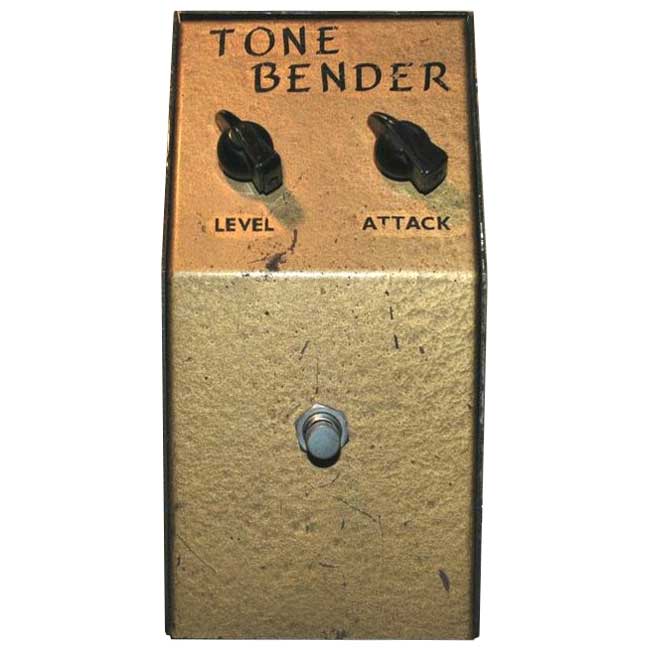
The Mark I
Gary Hurst produced the first official unit around April 1965 in London. Early specimens were made with a wooden (later bent metal) enclosure and used a three-transistor circuit based on the Maestro Fuzz-Tone. It's believed Hurst made less than 100 of the original units, with many built as custom jobs for players like Jeff Beck and Jimmy Page. The Yardbirds single "Heart Full of Soul" hit the radio that summer and put the pedal on the map.
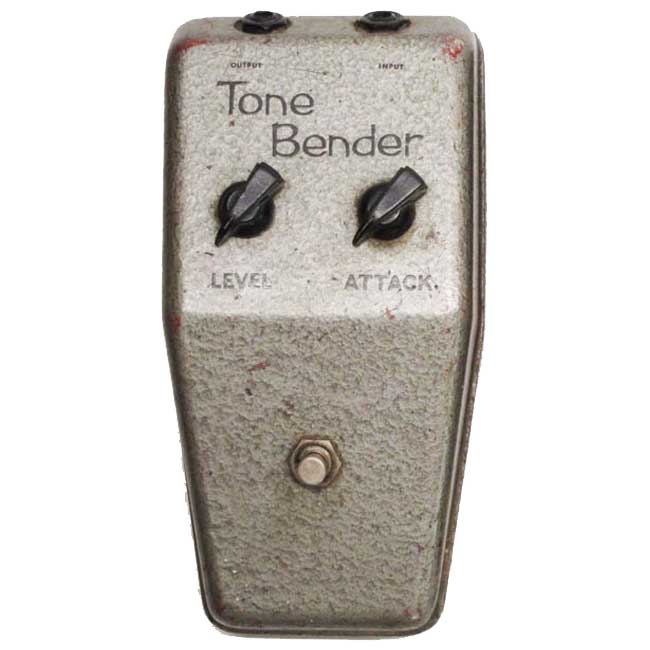
The Mark "1.5"
By February 1966, just months after the initial debut, a second Tone Bender iteration was in production with a two-transistor circuit and a sand-cast aluminum enclosure. Without any official MK II label, this came to be known as the "1.5" version. Some specimens carry the RotoSound label instead of Sola Sound. The Arbiter Fuzz Face is a close variation of this model's circuit that uses a different volume pot for a fuller low end.
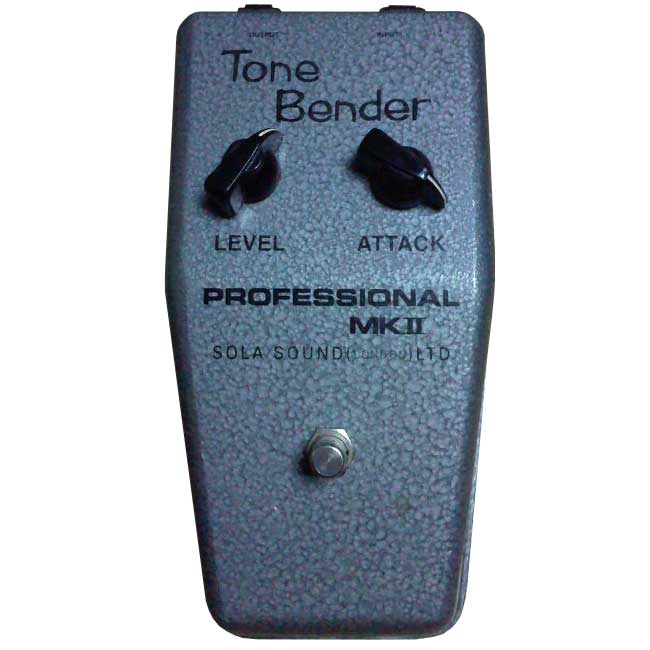
The Mark II
The official Mark II iteration returned to a three-transistor circuit but added an amplifier gain stage. At this point, Sola Sound produced units badged as the Vox Tone Bender Professional MK II, the Marshall Supa Fuzz, and the RotoSound Fuzz Box. This circuit was produced from around November 1966 to early 1968, with a few exceptions.
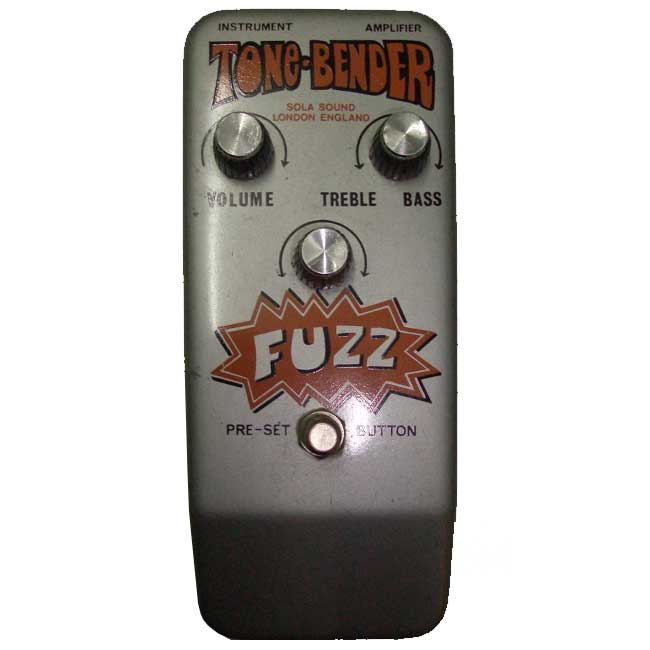
The Mark III
From early 1968 into the early 1970s, the pedal would include a tone knob and a germanium diode as part of its three-transistor circuit. Most MK III specimens wore the Vox badge. The Park Fuzz Sound and RotoSound Fuzz Box also used the same circuit.
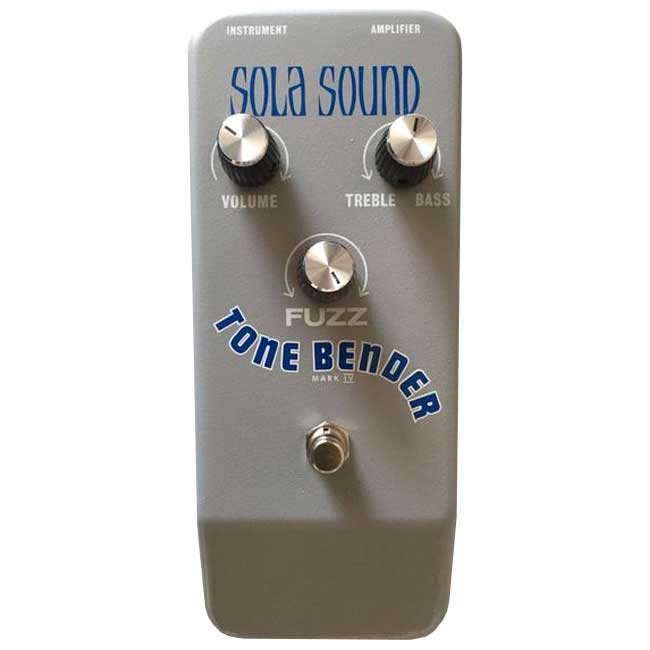
The Mark IV
By 1969, the Mark IV was being sold alongside the MK III Tone Bender. There are few internal difference between the two versions, though the MK IV had a slightly different enclosure and, by 1971, included updated graphics. The circuit lasted through 1976.

The Reverb Exclusive Mark IV Reissue
Produced by D*A*M in England, this authentic handmade reproduction uses three gain-selected OC75 germanium transistors and a single glass capsule germanium diode to build the three-stage Darlington fuzz circuit that made these pedals legendary. The only modern updates you'll find are a gentle lift in the output volume and a slight tweak to the tone circuit to make the maxed Treble setting less shrill and brittle-sounding. Cliff sockets and knobs, a Carling DPDT footswitch, and high-grad passive components make this a durable pedal for everyday use - not just a collector's piece.


